Intravenous anesthetics Anesthetics Agents that are capable of inducing a total or partial loss of sensation, especially tactile sensation and pain. They may act to induce general anesthesia, in which an unconscious state is achieved, or may act locally to induce numbness or lack of sensation at a targeted site. Anesthesiology: History and Basic Concepts have been used in modern anesthesia Anesthesia A state characterized by loss of feeling or sensation. This depression of nerve function is usually the result of pharmacologic action and is induced to allow performance of surgery or other painful procedures. Anesthesiology: History and Basic Concepts practice since the 20th century. Modern anesthesia Anesthesia A state characterized by loss of feeling or sensation. This depression of nerve function is usually the result of pharmacologic action and is induced to allow performance of surgery or other painful procedures. Anesthesiology: History and Basic Concepts began with inhaled anesthetics Anesthetics Agents that are capable of inducing a total or partial loss of sensation, especially tactile sensation and pain. They may act to induce general anesthesia, in which an unconscious state is achieved, or may act locally to induce numbness or lack of sensation at a targeted site. Anesthesiology: History and Basic Concepts; however, intravenous agents were adopted because injected or infused doses could be more closely controlled with little wasted medication. Several groups of agents are currently available (e.g., barbiturates, benzodiazepines Benzodiazepines Benzodiazepines work on the gamma-aminobutyric acid type A (GABAA) receptor to produce inhibitory effects on the CNS. Benzodiazepines do not mimic GABA, the main inhibitory neurotransmitter in humans, but instead potentiate GABA activity. Benzodiazepines, and dissociatives), but the most widely used are fentanyl Fentanyl A potent narcotic analgesic, abuse of which leads to habituation or addiction. It is primarily a mu-opioid agonist. Fentanyl is also used as an adjunct to general anesthetics, and as an anesthetic for induction and maintenance. Opioid Analgesics, midazolam Midazolam A short-acting hypnotic-sedative drug with anxiolytic and amnestic properties. It is used in dentistry, cardiac surgery, endoscopic procedures, as preanesthetic medication, and as an adjunct to local anesthesia. The short duration and cardiorespiratory stability makes it useful in poor-risk, elderly, and cardiac patients. It is water-soluble at ph less than 4 and lipid-soluble at physiological pH. Benzodiazepines, and propofol.
Last updated: Nov 21, 2022
The intravenous anesthetics Anesthetics Agents that are capable of inducing a total or partial loss of sensation, especially tactile sensation and pain. They may act to induce general anesthesia, in which an unconscious state is achieved, or may act locally to induce numbness or lack of sensation at a targeted site. Anesthesiology: History and Basic Concepts include:

The chemical structure of barbituric acid
Image: “Barbituric Acid Structural formula” by Jü. License: Public Domain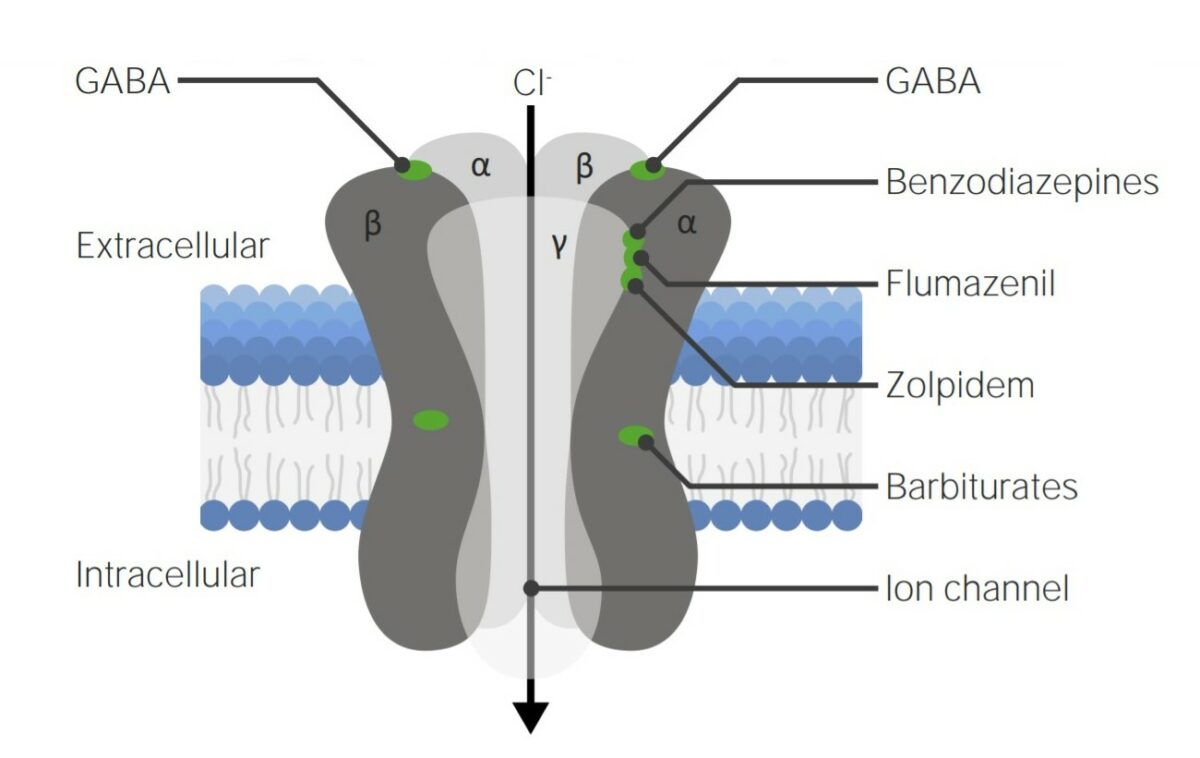
Diagram of the γ-aminobutyric acid A (GABAA) receptor:
Notice the different binding sites for the different families of medications.
Barbiturates are a group of sedative-hypnotic medications with the following indications:
Adverse effects:
Drug interactions:
Contraindications Contraindications A condition or factor associated with a recipient that makes the use of a drug, procedure, or physical agent improper or inadvisable. Contraindications may be absolute (life threatening) or relative (higher risk of complications in which benefits may outweigh risks). Noninvasive Ventilation:
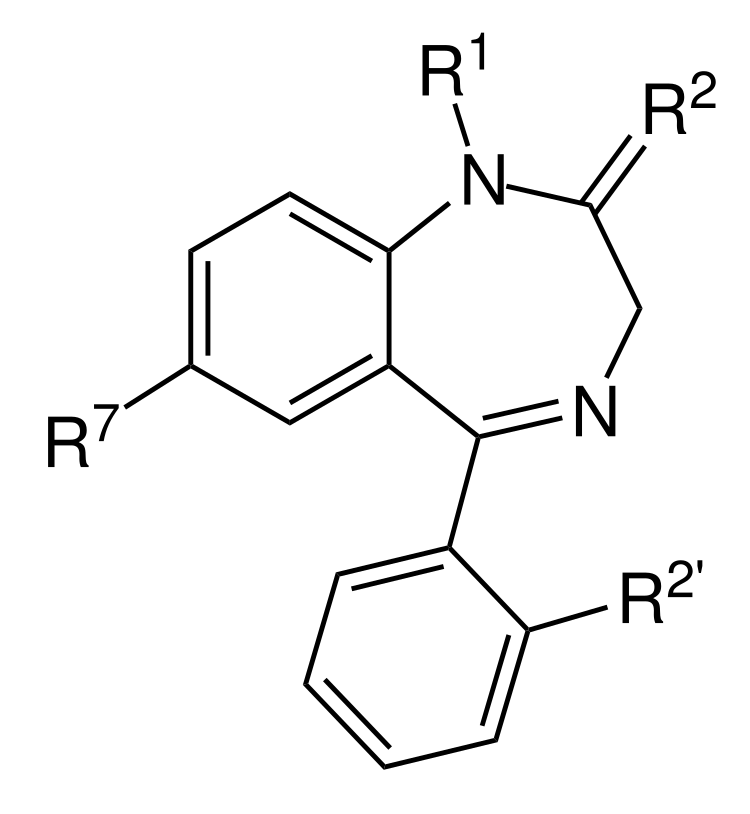
The basic ring structure of the benzodiazepine class:
Medications within the class have variable R groups.
Occupation/activation of the GABAA receptor Receptor Receptors are proteins located either on the surface of or within a cell that can bind to signaling molecules known as ligands (e.g., hormones) and cause some type of response within the cell. Receptors increases the opening frequency of the associated chloride Chloride Inorganic compounds derived from hydrochloric acid that contain the Cl- ion. Electrolytes (Cl-) channel, resulting in action potential Action Potential Abrupt changes in the membrane potential that sweep along the cell membrane of excitable cells in response to excitation stimuli. Membrane Potential inhibition:
Adverse effects:
Drug interactions:
Contraindications Contraindications A condition or factor associated with a recipient that makes the use of a drug, procedure, or physical agent improper or inadvisable. Contraindications may be absolute (life threatening) or relative (higher risk of complications in which benefits may outweigh risks). Noninvasive Ventilation:
Clinical presentation:
Management:
Ketamine is similar to phencyclidine ( PCP PCP Pneumocystis jiroveci is a yeast-like fungus causing pneumocystis pneumonia (PCP) in immunocompromised patients. Pneumocystis pneumonia is spread through airborne transmission and classically affects patients with AIDS, functioning as an AIDS-defining illness. Patients may present with insidious onset of fever, chills, dry cough, chest pain, and shortness of breath. Pneumocystis jirovecii/Pneumocystis Pneumonia (PCP)), a hallucinogen Hallucinogen Drugs capable of inducing illusions, hallucinations, delusions, paranoid ideations, and other alterations of mood and thinking. Despite the name, the feature that distinguishes these agents from other classes of drugs is their capacity to induce states of altered perception, thought, and feeling that are not experienced otherwise. Hallucinogen Use Disorder.
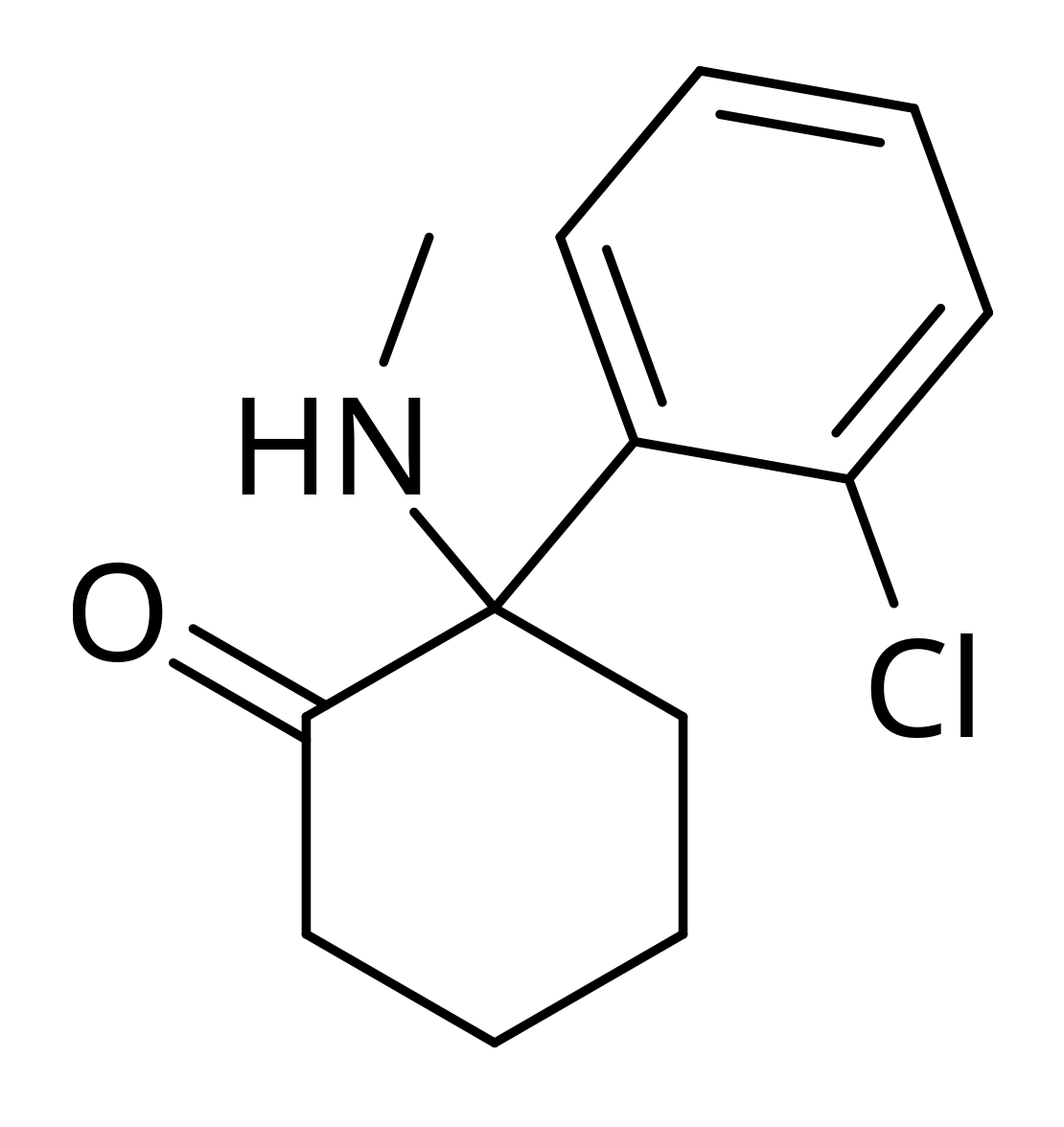
The chemical structure of ketamine
Image: “Structure of ketamine” by Brenton. License: Public DomainAdverse effects:
Drug interactions:
Contraindications Contraindications A condition or factor associated with a recipient that makes the use of a drug, procedure, or physical agent improper or inadvisable. Contraindications may be absolute (life threatening) or relative (higher risk of complications in which benefits may outweigh risks). Noninvasive Ventilation:
Cautious administration in:
Etomidate is an intravenous anesthetic agent with the following characteristics:
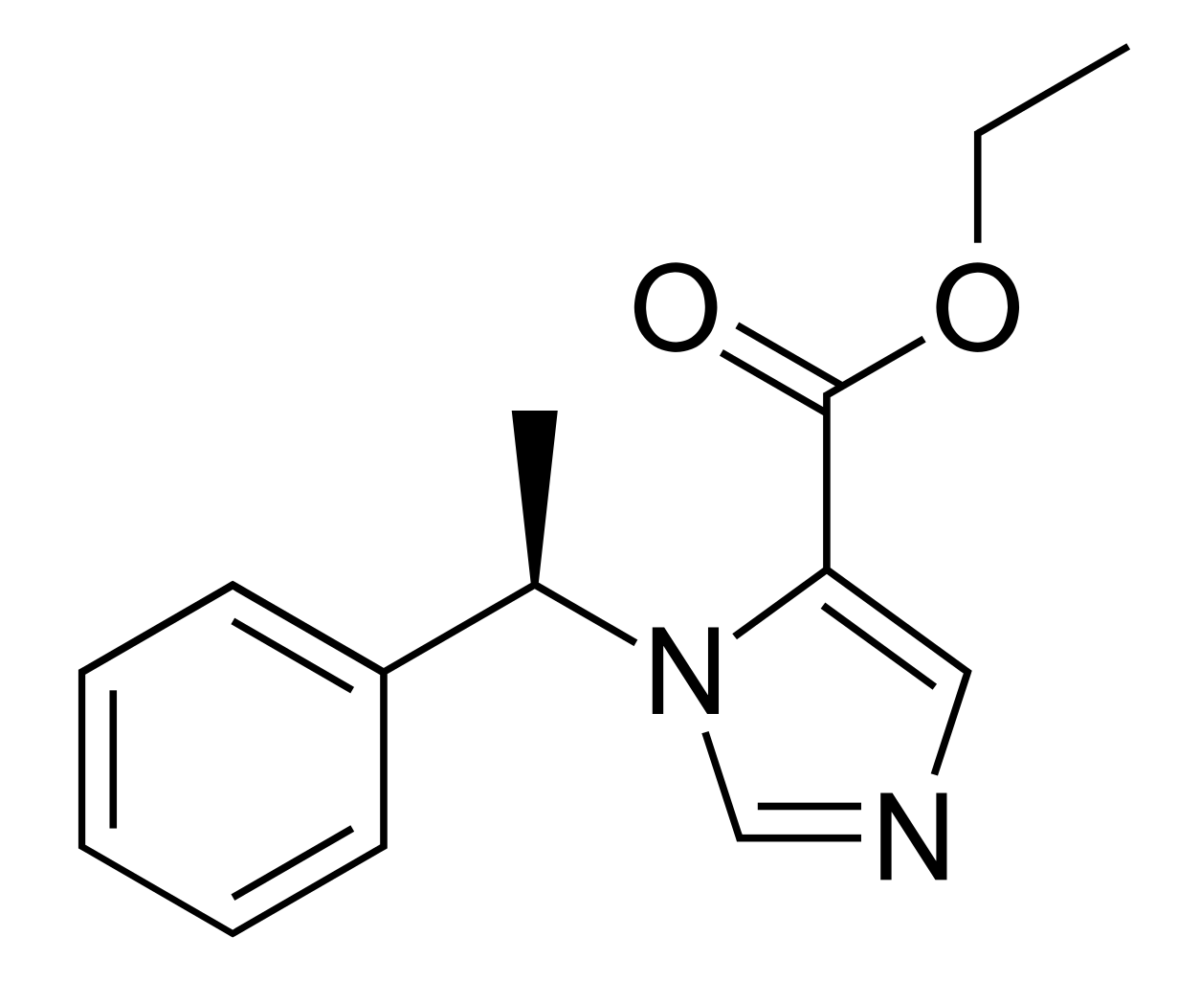
The chemical structure of etomidate
Image: “Etomidate” by Vaccinationist. License: Public DomainOccupation/activation of the GABAA receptor Receptor Receptors are proteins located either on the surface of or within a cell that can bind to signaling molecules known as ligands (e.g., hormones) and cause some type of response within the cell. Receptors increases sensitivity for GABA GABA The most common inhibitory neurotransmitter in the central nervous system. Receptors and Neurotransmitters of the CNS to reduce neuroexcitation.
Adverse effects:
Drug interactions:
Cautious use:
Propofol is the most widely used induction agent.
The chemical structure of propofol includes a phenol ring substituted with 2 isopropyl groups.
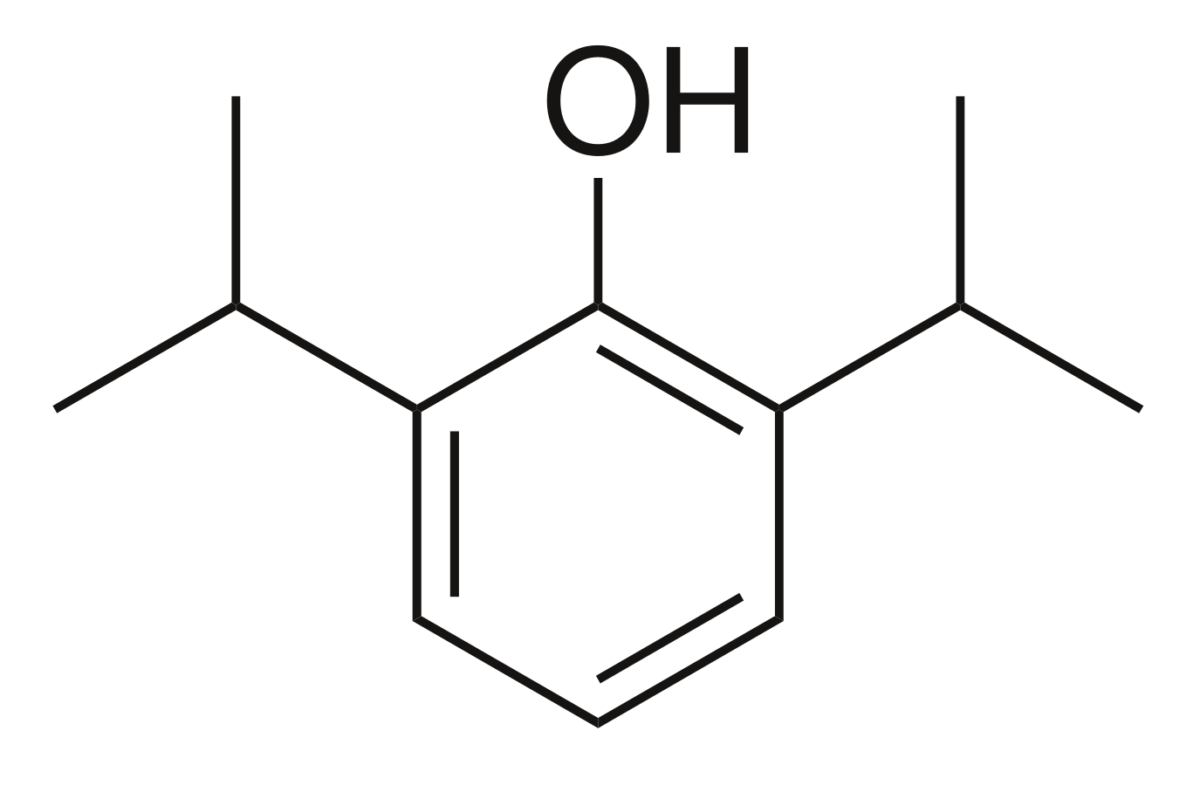
The chemical structure of propofol
Image: “Propofol” by Harbin. License: Public DomainAdverse effects:
Drug interactions:
Contraindications Contraindications A condition or factor associated with a recipient that makes the use of a drug, procedure, or physical agent improper or inadvisable. Contraindications may be absolute (life threatening) or relative (higher risk of complications in which benefits may outweigh risks). Noninvasive Ventilation:
Propofol infusion syndrome (PRIS) occurs in individuals with prolonged infusions of propofol:
Clinical presentation:
Management:
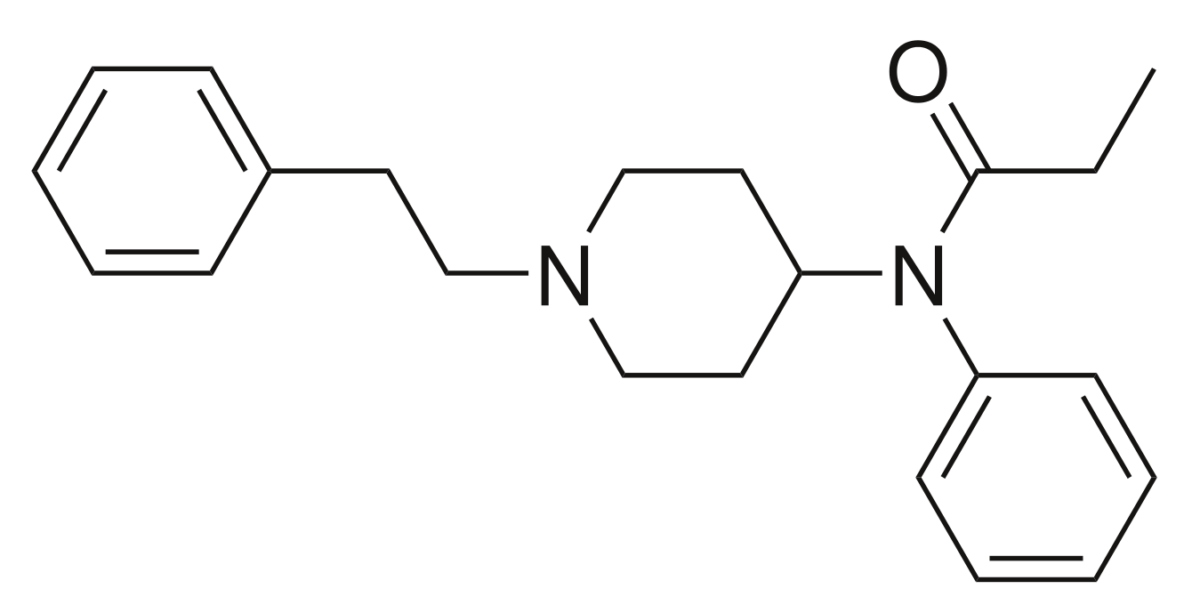
The chemical structure of fentanyl
Image: “2D structure of fentanyl” by Harbin. License: Public DomainAdverse effects:
Drug interactions:
Contraindications Contraindications A condition or factor associated with a recipient that makes the use of a drug, procedure, or physical agent improper or inadvisable. Contraindications may be absolute (life threatening) or relative (higher risk of complications in which benefits may outweigh risks). Noninvasive Ventilation:
Clinical presentation:
Management: